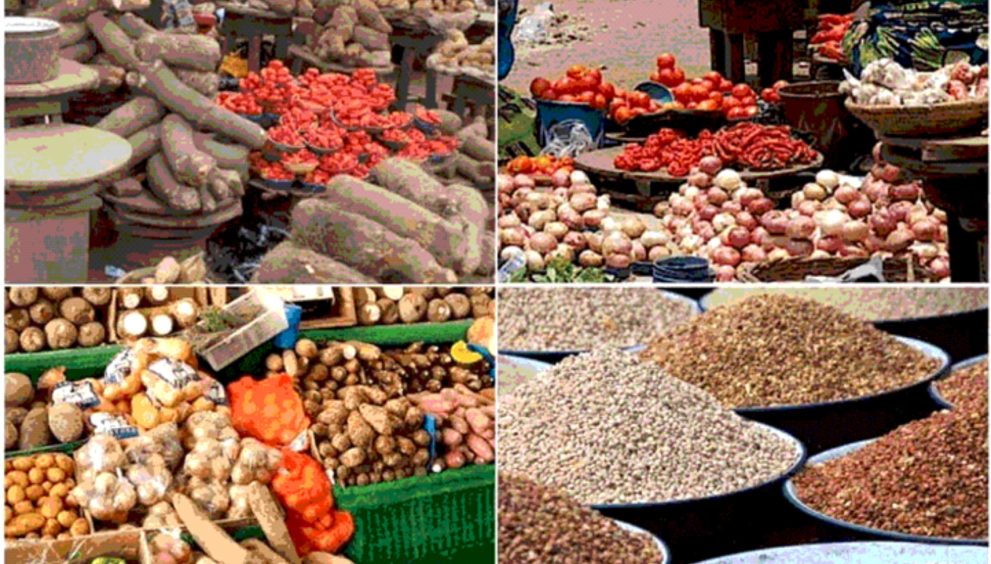Why prices of food still expensive despite drop in dollar rate

By Babatunde Ayedoju
Though economic downturn is a regular occurence in every economy globally, and Nigeria is not an exception, for close to a year, Nigerians have seen a new reality, as the naira-dollar exchange rate has witnessed an unprecedented surge.
The naira-dollar exchange rate, for several years, has been rising from less than ₦100 some decades ago to ₦100, ₦150, ₦300 at a point, ₦400 and it kept rising, defying the law of gravity.
On the last trading day of 2023, the Nigerian foreign exchange market closed for the year losing 96.55 percent of its value against dollar in the official market. Dollar was quoted ₦907.11, compared to ₦461.61 at the end of 2022 at the Nigerian Autonomous Foreign Exchange Market (NAFEM).
At the parallel market which is also known as black market, naira lost 62.16 percent as dollar was sold for ₦1,200 on the last trading day of 2023, compared to ₦740 on the last trading day of 2022.
As we progressed into the year, the exchange rate continued to rise until a dollar was sold for as high as ₦1,900 in the parallel market which is what is most easily accessible to Nigerians who want to buy or sell dollar. That was just an inch from ₦2,000.
Of course, with this rise in exchange rate, coupled with the price of petrol which is more than ₦600, courtesy of the fuel subsidy removal in the middle of last year, the prices of commodities began to soar high as if they were aiming for the sky.
According to investigations carried out by The Hope in January this year, prices of foodstuffs ranging from staples to provisions increased by 15 to 25 percent. A 50kg bag of small grain polished rice sold between N52,000 and N54,000 in the first week of January increased to between N59,000 and N60,000.
At the Oja Oba market in Akure, checks by The Hope showed that the prices of beans, rice, yam, garri, onions, tomatoes, pepper, fish, vegetable oil, palm oil, flour, and others flew rapidly beyond the reach of the average consumer.
A congo of garri jumped as high as N1000 and is now sold for ₦1,200, while a congo of local and foreign rice flew beyond ₦2,000. White and brown beans were sold for N1,600 and N1,900, a congo of yam flour for N1,200, a congo of pupuru N1,000. A kilo of wheat moved from N500 to N900, while a kilo of Semo settled for N1,200 at that time.
Spaghetti that many people did not seem to reckon with refused to be left out of the price surge as the various brands sold for at leastN700, a loaf of bread between N600 and N1500 depending on the size, an egg for N150, a piece of Titus fish within the range of N1,300 and N1,800, and a litre of groundnut oil N1,500, while palm oil went as high as N1,100.
Further investigations by The Hope in February still showed substantial increase in the prices of these food items. For instance, a bag of foreign rice increased from N50,000 to between N70, 000 and N74, 000, depending on the quality and brand, just as the price of local rice also skyrocketed from between N35,000 and N40,000 to between N65,000 and N70,000, depending on the quality and brand. A crate of eggs would later, in March, move from ₦3,000 to between ₦3,800 and ₦4,000, depending on the size.
It must be noted that it is not the prices of foodstuffs alone that have been giving sleepless nights to the masses and average income earners. For example, in the same month of February, The Hope discovered that block makers had increased the price of six inch block from ₦450 to ₦500, and nine inch block from ₦550 to ₦600.
The price of cement also increased, as the product was sold for N13,000 in some retail shops in the Federal Capital Territory until the Federal Government intervened. After a meeting with the Minister of Works, David Umahi, and the Minister of Industry, Trade and Investment, Doris Uzoka-Anite, the three major cement producers – Dangote, BUA, and Lafarge – reportedly agreed that cement price would not exceed N7,000 or N8,000, depending on the location.
Like a silver lining on the sky, the price of dollar which had gone as high as ₦1,900 early this year, raising fear in some quarters that it might hit ₦2,000, suddenly began to come down until it became $1 to about ₦1,200.
Unfortunately, though the price of dollar, which a lot of traders blamed for the increase in prices of their commodities, has started coming down, the prices of those commodities have stayed where they are, as if they are now ready to come down with the price of dollar. What could be responsible? Is the drop in exchange rate not significant enough to affect prices of goods and services?
Speaking on the trend, Dr Edamisan Ikuemonisan from the Department of Agricultural Economics, Adekunle Ajasin University, Akungba-Akoko noted that the market is inefficient and that the transmission of the price dynamics to the market is low. He attributed this to many reasons, one of which is low literacy level. He said that many people do not understand what exchange rate is all about or how it should affect the market, calling on the government to do a lot of sensitisation for the public in that regard.
Secondly, Dr Ikuemonisan pointed out that some of the prices that skyrocketed had nothing to do with dollar rate in the first place, adding that some sellers only seized that opportunity to exploit others. In his words, “that is why th reduction in exchange rate may not lead to an immediate reduction in the price of goods; it was not the actual reason why many of those prices went up in the first place.”
While calling for government intervention, the seasoned agroeconomist, said, “It will have consequences on sellers. They are making abnormal profit now. Therefore, many will join them in their businesses and that will reduce the daily sales of each person. So when the price is going to come down, it will come below the normal average.
“Government needs to create enough awareness of the consequence; to let traders know that they will hurt themselves as they try to hurt others.”
Likewise, Dr Chris Ofonyelu who said that every human being is selfish and is an opportunist, added that people are simply exploiting the opportunity of high exchange rate to maximise profit. He blamed that situation on the fact that there is nobody to compel traders if they refuse to reduce their prices.
Dr Ofonyelu added that this is the period when a lot of the traders can make profits they did not really make when the dollar rate first went up, even as many of them fear that the exchange rate reduction may just be for a while.
However, he said that if the drop in exchange rate persists, a lot of traders would have no choice but to adjust their prices, because many of them are already experiencing low patronage.












